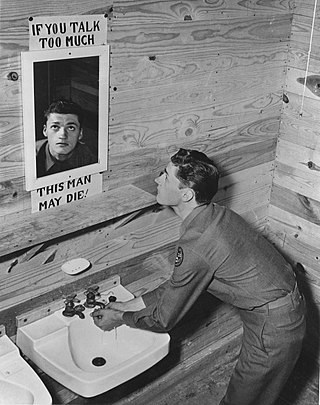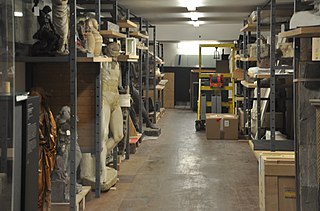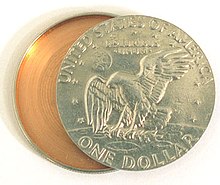
Gun safety is the study and practice of using, transporting, storing and disposing of firearms and ammunition, including the training of gun users, the design of weapons, and formal and informal regulation of gun production, distribution, and usage, for the purpose of avoiding unintentional injury, illness, or death. This includes mishaps like accidental discharge, negligent discharge, and firearm malfunctions, as well as secondary risks like hearing loss, lead poisoning from bullets, and pollution from other hazardous materials in propellants and cartridges. There were 47,000 unintentional firearm deaths worldwide in 2013.
Steganography is the practice of representing information within another message or physical object, in such a manner that the presence of the information is not evident to human inspection. In computing/electronic contexts, a computer file, message, image, or video is concealed within another file, message, image, or video. The word steganography comes from Greek steganographia, which combines the words steganós, meaning "covered or concealed", and -graphia meaning "writing".

Secrecy is the practice of hiding information from certain individuals or groups who do not have the "need to know", perhaps while sharing it with other individuals. That which is kept hidden is known as the secret.
In computer security, a covert channel is a type of attack that creates a capability to transfer information objects between processes that are not supposed to be allowed to communicate by the computer security policy. The term, originated in 1973 by Butler Lampson, is defined as channels "not intended for information transfer at all, such as the service program's effect on system load," to distinguish it from legitimate channels that are subjected to access controls by COMPUSEC.

A booby trap is a device or setup that is intended to kill, harm or surprise a human or another animal. It is triggered by the presence or actions of the victim and sometimes has some form of bait designed to lure the victim towards it. The trap may be set to act upon trespassers that enter restricted areas, and it can be triggered when the victim performs an action. It can also be triggered by vehicles driving along a road, as in the case of improvised explosive devices (IEDs).

A dead drop or dead letter box is a method of espionage tradecraft used to pass items or information between two individuals using a secret location. By avoiding direct meetings, individuals can maintain operational security. This method stands in contrast to the live drop, so-called because two persons meet to exchange items or information.

A safe is a secure lockable enclosure used for securing valuable objects against theft or fire. A safe is usually a hollow cuboid or cylinder, with one face being removable or hinged to form a door. The body and door may be cast from metal or formed out of plastic through blow molding. Bank teller safes typically are secured to the counter, have a slit opening for dropping valuables into the safe without opening it, and a time-delay combination lock to foil thieves. One significant distinction between types of safes is whether the safe is secured to a wall or structure or if it can be moved around.

A chest is a form of furniture typically of a rectangular structure with four walls and a removable or hinged lid, used for storage, usually of personal items. The interior space may be subdivided.

Tradecraft, within the intelligence community, refers to the techniques, methods, and technologies used in modern espionage (spying) and generally as part of the activity of intelligence assessment. This includes general topics or techniques, or the specific techniques of a nation or organization.
This is a glossary of conjuring terms used by magicians.
Secret room or secret rooms may refer to:

There are many real and fictitious occurrences of concealing objects in a book. Items can be concealed in books in a number of ways. Small items such as a photograph or a note can be hidden in between the pages of the book. Thicker items can be hidden by removing the interior portion of some or all of the pages, creating a book safe or hollowed-out book. Book safes are easy for their owners to recognise, but they do not stand out to a thief or other intruder.

Home Alone is the title of several tie-in video games based on the film of the same name written by John Hughes. Versions were released for the Nintendo Entertainment System, Game Boy, Super Nintendo Entertainment System, Master System, Sega Genesis, Game Gear, Amiga, and MS-DOS platforms. The games were released between 1991 and 1992, each with different gameplay.

A gun safe is a safe designed for storing one or more firearms and/or ammunitions. Gun safes are primarily used to prevent access by unauthorized or unqualified persons, for burglary protection and, in more capable safes, to protect the contents from damage by flood, fire or other natural disasters.

A locker is a small, usually narrow storage compartment. They are commonly found in dedicated cabinets, very often in large numbers, in various public places such as locker rooms, workplaces, schools, transport hubs and the like. They vary in size, purpose, construction, and security.
Criminal possession of a weapon is the unlawful possession of a weapon by an individual. It may also be an additional crime if a violent offense was committed with a deadly weapon or firearm.

A hidden compartment or secret compartment is a compartment whose existence or access is not obvious at first glance, and can be used as a hiding place for objects or sometimes even for people.

A ballpoint pen knife is a multi-tool pocket knife consisting of a blade concealed inside an ordinary-looking ballpoint pen. The blade, typically 50 to 125 millimetres long, is hidden when not in use. They first appeared as custom-made pens from various custom knife makers, and were later mass-produced by other companies.

The cultural property storage typically falls to the responsibility of cultural heritage institutions, or individuals. The proper storage of these objects can help to ensure a longer lifespan for the object with minimal damage or degradation. With so many different types of artifacts, materials, and combinations of materials, keepers of these artifacts often have considerable knowledge of the best practices in storing these objects to preserve their original state.















